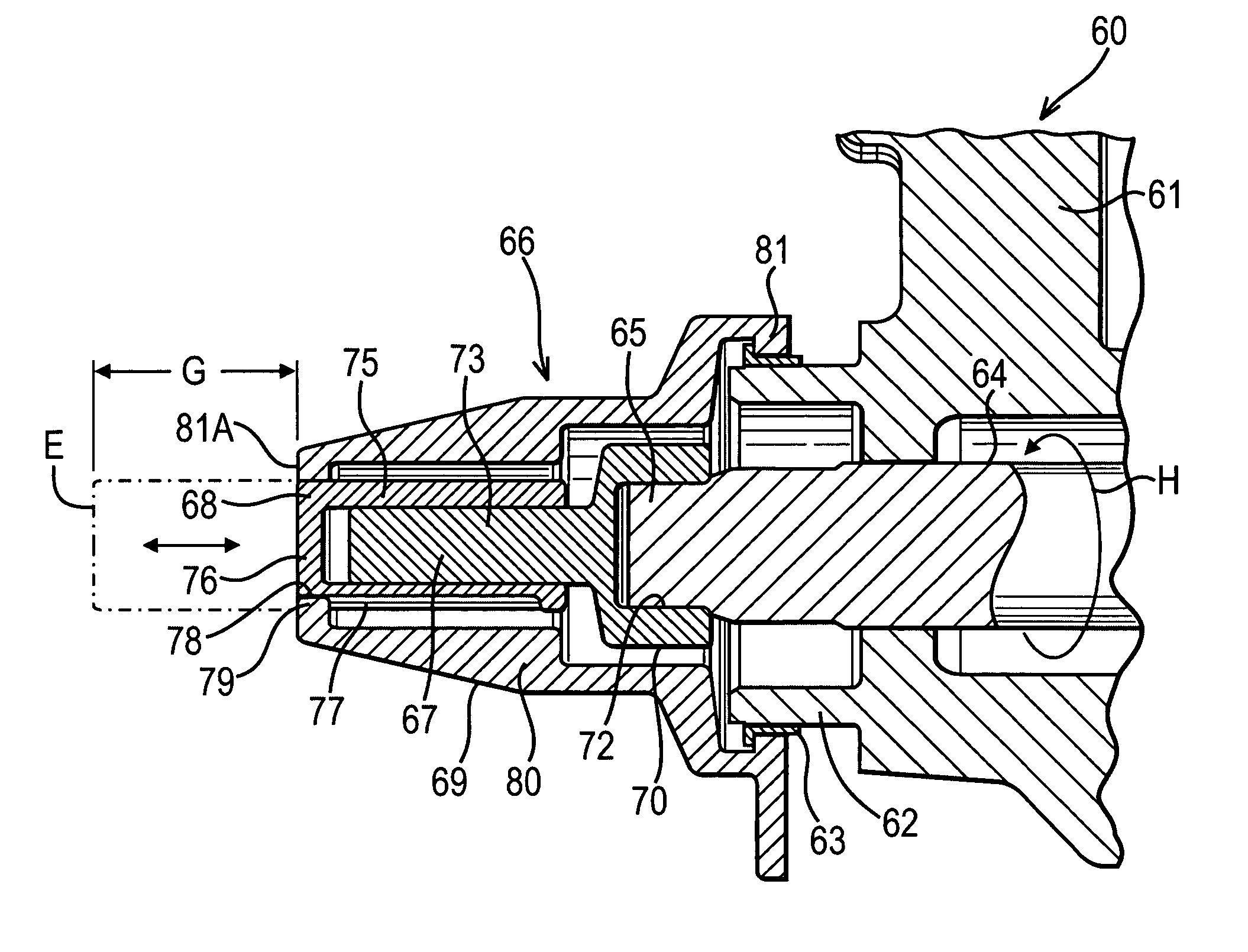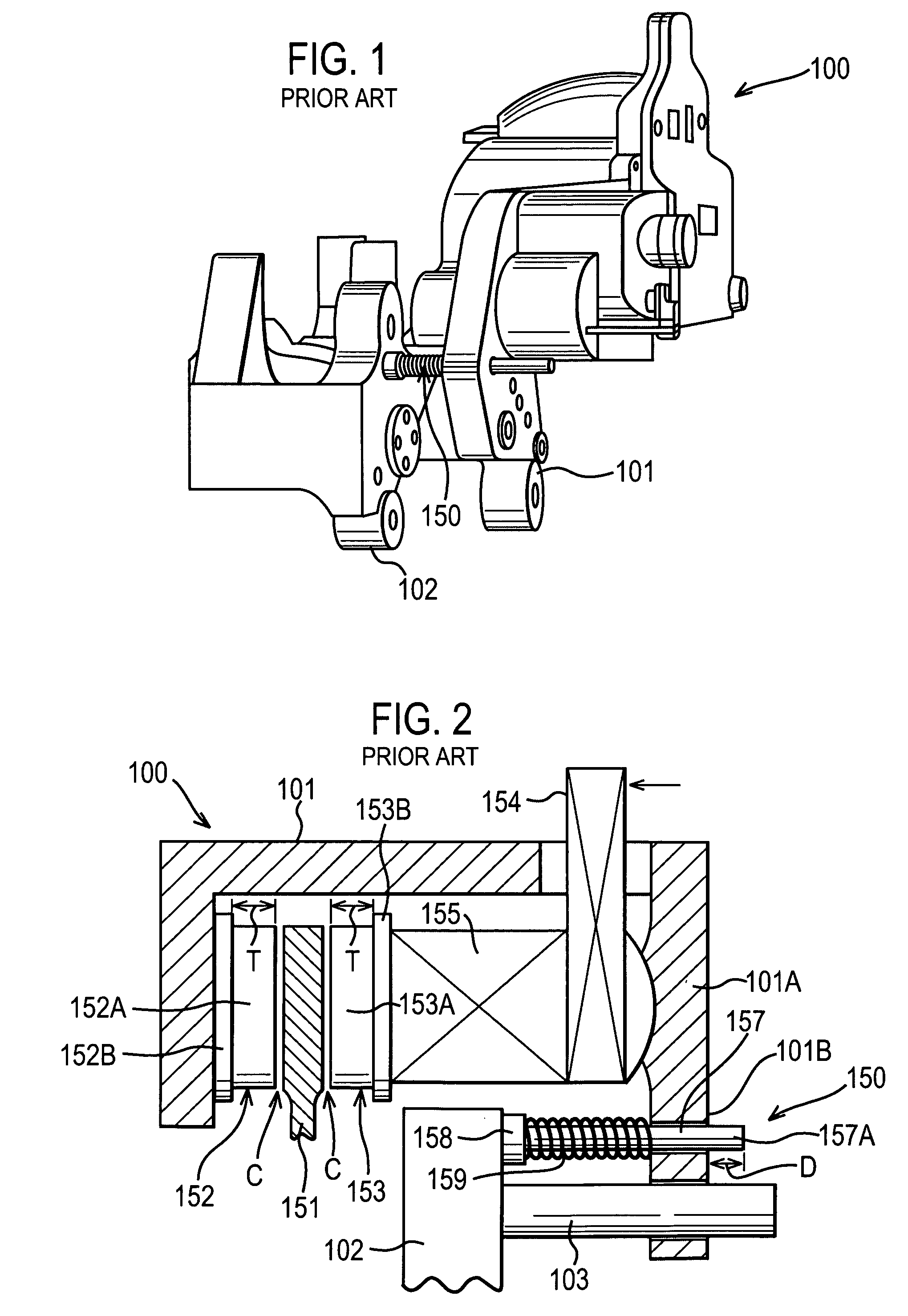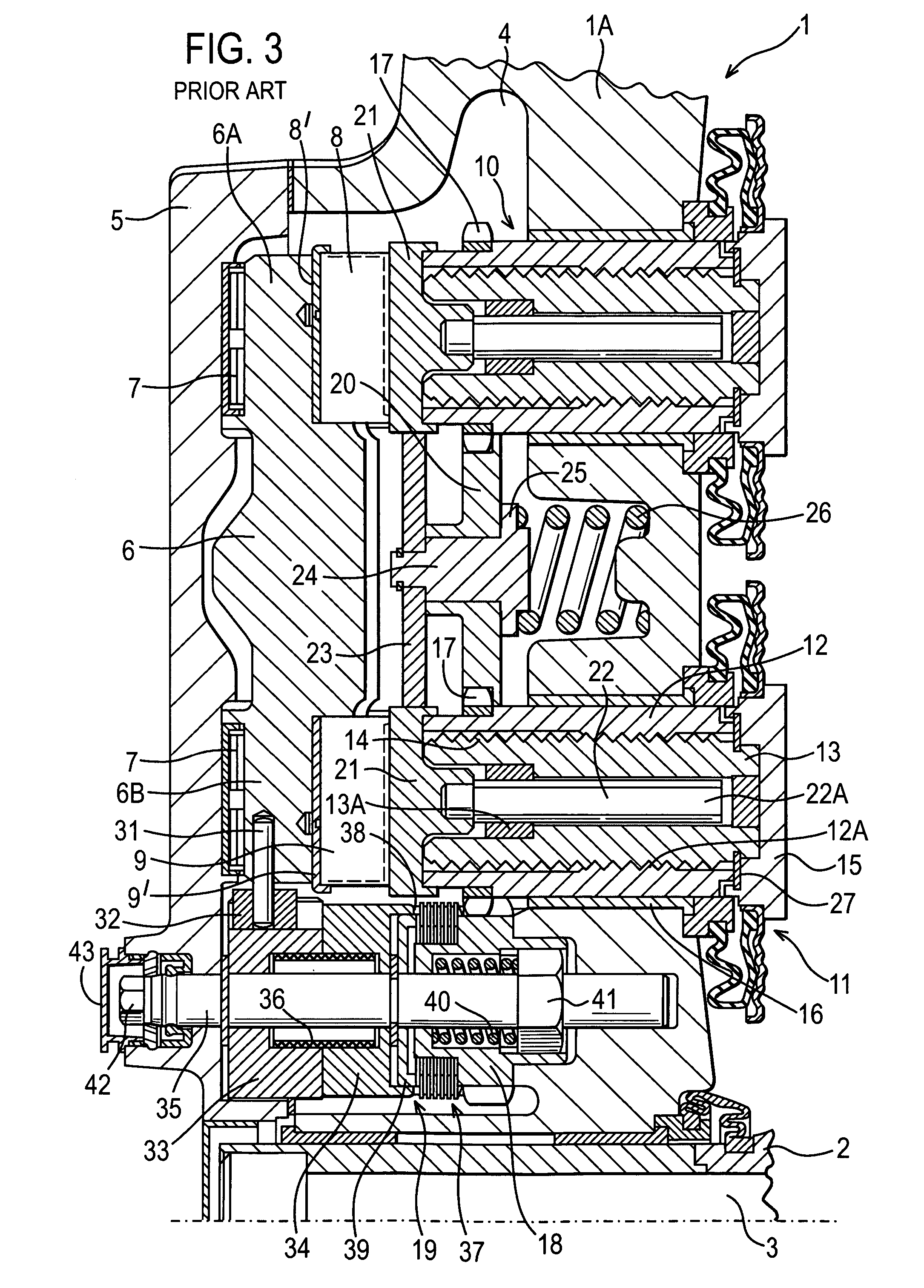Brake pad wear indicator
a technology of wear indicator and brake pad, which is applied in the direction of brake elements, slack adjusters, brake members, etc., can solve the problem that the wear indicator does not take into account the wear of the inboard pad
- Summary
- Abstract
- Description
- Claims
- Application Information
AI Technical Summary
Benefits of technology
Problems solved by technology
Method used
Image
Examples
second embodiment
[0049]FIG. 6 shows a brake assembly 160 which includes the wear indicator assembly 66 of FIG. 4. However, in this case, the hexagonal recess 72 of the first component 67 engages a torque limiting device 83 which in turn engages a drive formation in the form of a hexagonal head 165 of a manual adjuster shaft 164. Torque limiting devices per se are known, and examples can be found in UK Patent GB2304387 and German Patent DE19923457C1. In summary, the torque limiting device 83 has a region 84 that engages the head 165 and a region 85 that is designed to be engaged by a tool, such as a spanner or hexagonal socket.
[0050] The torque limiting device 83 operates to prevent damage to the caliper as follows. When the brake pads have worn down to their service limit, they must be removed. To be able to insert the new, thicker brake pads, the adjuster mechanism must be de adjusted, and this is typically done by manually rotating the manually adjuster shaft 164. This is done by removing the wear...
third embodiment
[0051]FIG. 7 shows a wear indicator assembly 266 which includes a first and second component identical to those shown in FIG. 4, but in this case a manual adjuster shaft cap body 280 sealingly engages in a recess 286 of a boss 270 of a sliding caliper 261. An elastomeric o-ring 287 provides sealing.
fourth embodiment
[0052]FIG. 8 shows a wear indicator assembly 360. The sliding caliper 61, the ring retainer 63 and the manual adjuster shaft 64 are identical to those shown in FIG. 4. The wear indicator assembly 360 includes a drive pin 90 having a boss 91 (similar to the boss 70) with a recess 92 (similar to the recess 72). However, a shaft 93 has a hexagonal cross section which acts as a drive formation 94. The drive formation 94 slidingly engages a hexagonal recess 96 in an indicator pin 95. An external surface 97 of the indicator pin 95 is threaded and threadingly engages a threaded internal surface of an end hole 98. A manual adjuster shaft cap 99 is rotationally fast with the sliding caliper 61. The indicator pin 95 and the drive pin 90 are both rotationally fast with the manual adjuster shaft 64. In this case, the external thread on the indicator pin 95 and the internal thread in the end hole 98 are both left hand threads. Thus, as the manual adjuster shaft 64 rotates in the direction of arr...
PUM
 Login to View More
Login to View More Abstract
Description
Claims
Application Information
 Login to View More
Login to View More - R&D
- Intellectual Property
- Life Sciences
- Materials
- Tech Scout
- Unparalleled Data Quality
- Higher Quality Content
- 60% Fewer Hallucinations
Browse by: Latest US Patents, China's latest patents, Technical Efficacy Thesaurus, Application Domain, Technology Topic, Popular Technical Reports.
© 2025 PatSnap. All rights reserved.Legal|Privacy policy|Modern Slavery Act Transparency Statement|Sitemap|About US| Contact US: help@patsnap.com



